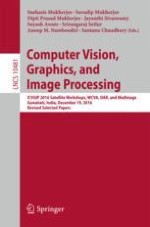2017 | Book
Computer Vision, Graphics, and Image Processing
ICVGIP 2016 Satellite Workshops, WCVA, DAR, and MedImage, Guwahati, India, December 19, 2016 Revised Selected Papers
Editors: Snehasis Mukherjee, Suvadip Mukherjee, Dipti Prasad Mukherjee, Prof. Jayanthi Sivaswamy, Suyash Awate, Srirangaraj Setlur, Anoop M. Namboodiri, Prof. Dr. Santanu Chaudhury
Publisher: Springer International Publishing
Book Series : Lecture Notes in Computer Science
